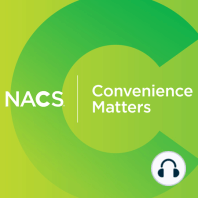21 min listen
#309 Retailing With Purpose
ratings:
Length:
28 minutes
Released:
Nov 8, 2021
Format:
Podcast episode
Description
Consumers will embrace a brand that stands for something, cares about the community, and shares their values. Kum & Go is one convenience retail company that goes beyond leading with purpose and models its entire operation around it. Related Links: NACS Managing Food Waste Guide Kum & Go/Krause Group 2020 Corporate Social Responsibility Report Episode #298 Resolving Food Waste as a Business Solution Hosted by: Carolyn Schnare, Director Strategic Initiatives, NACS and Jeff Lenard, VP Strategic Industry Initiatives, NACS About our Guests: Emily Bahnsen, Philanthropy Manager, Kum & Go Emily Bahnsen oversees Kum & Go’s philanthropic giving programs, including the company’s annual United Way and Habitat for Humanity campaigns, grants and in-kind donations. In addition to her work at Kum & Go, Bahnsen is a member of the Mid-Iowa Planned Giving Council, Association of Fundraising Professionals and Community Foundation of Greater Des Moines Funders Forum. She also volunteers her time with the Young Women’s Resource Center Young Empowerment Partnership board, Business Volunteer Council, and as a reading mentor for Everybody Wins Iowa. Meg Kayko, Waste Reduction Specialist, Kum & Go Meg Kayko oversees Kum & Go's sustainability programs for waste reduction including food donations, recycling and trash management, and more. Meg is actively involved with the NACS Sustainability Strategy Group as a valued contributor and frequent presenter.
Released:
Nov 8, 2021
Format:
Podcast episode
Titles in the series (100)
#19 Shared Travel: Revolution or Evolution?: Smartphones have gone well beyond transforming how people communicate and share moments from their lives on social media – they are now transforming how people share things, whether renting homes, selling goods or even sharing cars. The allure to... by Convenience Matters
